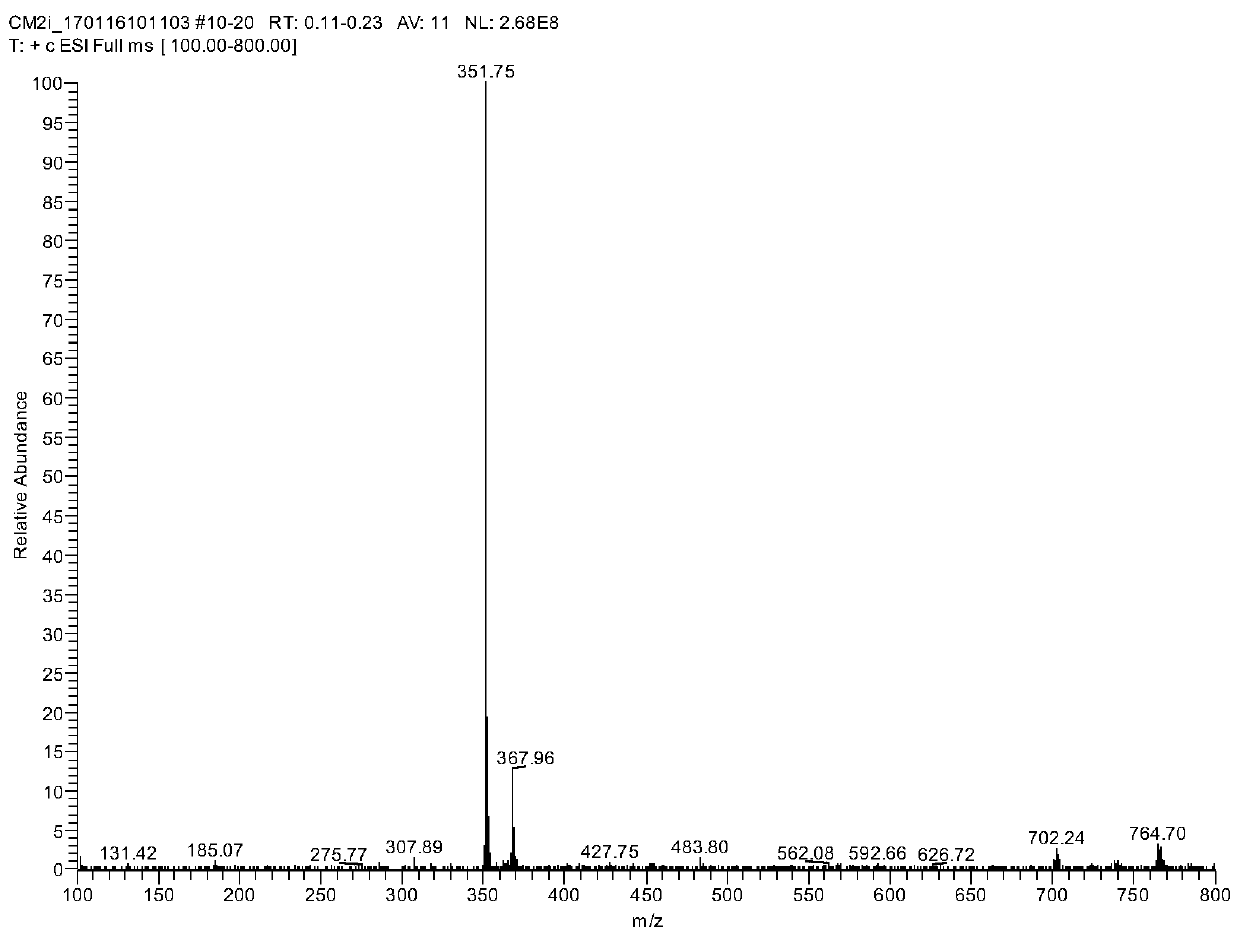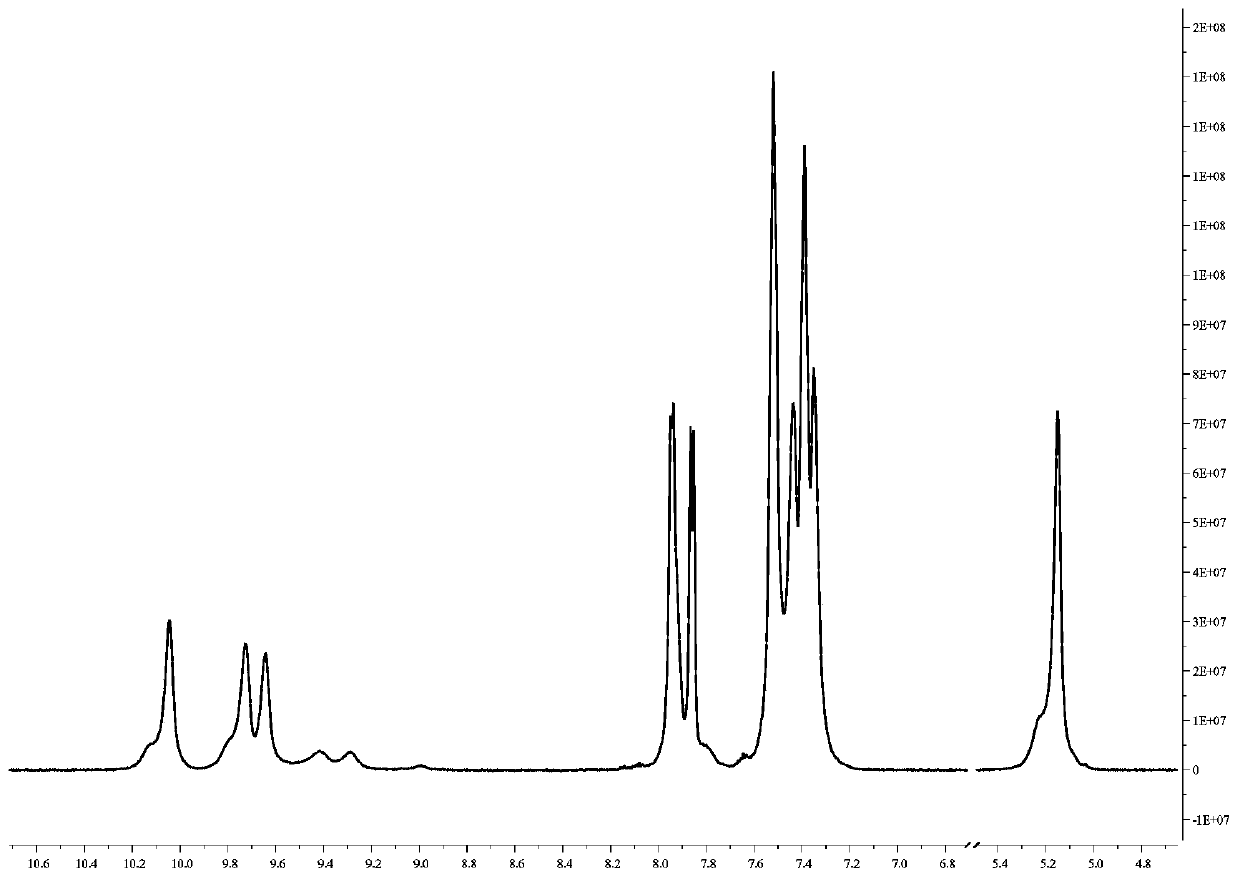Multifunctional kation fluorescent probe based on amidothiourea and preparation method thereof
A fluorescent probe and thiourea-based technology, which is applied in the field of fluorescent probes, can solve the problems of single target object, incompatibility with multifunctionality, and inability to use ion detection, and achieves excellent selectivity.
- Summary
- Abstract
- Description
- Claims
- Application Information
AI Technical Summary
Problems solved by technology
Method used
Image
Examples
Embodiment 1
[0053] Weigh 0.3324g benzyl carbazate (white powder) in a 100mL round bottom flask, add 20mL acetonitrile to dissolve, obtain a colorless transparent solution, then add 0.3326g 1-naphthalene isothiocyanate (white needle-like crystals), in After reacting at 75 degrees Celsius for 8 hours, the reaction solution appeared a very light light yellow-green color. After the acetonitrile solvent was removed by vacuum rotary evaporation, (because dichloromethane is volatile and the product is insoluble in dichloromethane), after adding about ten milliliters of dichloromethane, it appeared immediately. There is a large amount of white powder, the turbid liquid is suction-filtered, and the white precipitate is washed several times with a large amount of dichloromethane, and the filter residue is dried in a vacuum drying oven (75 degrees Celsius) to obtain 0.4232g of white powder-fluorescent probe 1 , the yield was 64%.
[0054] Perform mass spectrogram MS characterization of the above-men...
experiment example 1
[0059] The purpose of this experiment is to study the effect of pH on the recognition of Hg by probe 1 2+ The influence of probe 1 and the detection of Hg 2+ sensitivity analysis.
[0060] 1. Preparation of test samples and test conditions
[0061] 1) Probe 1 obtained in Example 1 was dissolved in anhydrous methanol to prepare a stock solution with a concentration of 5.0 mM and diluted to a stock solution with a concentration of 0.5 mM.
[0062] 2) Equipped with 5.0mM Hg(ClO 4 ) 2 、K 2 SO 4 、Al 2 (SO 4 ) 3 , AgClO 4 , MnCl 2 , CrCl 3 , AlCl 3 , ZnSO 4 、CoSO 4 、NiCl 2 , NaCl, CuCl 2 , Ca(NO 3 ) 2 , CdCl 2 , FeSO 4 , FeCl 3 , BaCl 2 , MgCl 2 of aqueous solution. Equipped with 5.0mM KClO respectively 3 , potassium persulfate, K 3 PO 4 , sodium bromide, sodium chloride, sodium hypochlorite, sodium chlorite, sodium fluoride, sodium dihydrogen phosphate, sodium bicarbonate, sodium bisulfite, sodium bisulfate, sodium iodide, sodium thiosulfate, sodium sulfa...
experiment example 2
[0087] Using the working curve method to determine its binding ratio to further explore the relationship between probe 1 and Hg 2+ identification process, such as Figure 10 As shown, immobilized probe 1 with Hg 2+ The total concentration was 10.0 μM, by changing the Hg 2+ Prepare different test solutions with the concentration ratio of probe 1, and test their fluorescence intensity values at 383nm. It can be seen from the figure that Hg 2+ When the concentration accounts for 50%, its fluorescence intensity is the largest, which indicates that probe 1 and Hg 2+ The combination ratio is 1:1.
PUM
 Login to View More
Login to View More Abstract
Description
Claims
Application Information
 Login to View More
Login to View More - R&D
- Intellectual Property
- Life Sciences
- Materials
- Tech Scout
- Unparalleled Data Quality
- Higher Quality Content
- 60% Fewer Hallucinations
Browse by: Latest US Patents, China's latest patents, Technical Efficacy Thesaurus, Application Domain, Technology Topic, Popular Technical Reports.
© 2025 PatSnap. All rights reserved.Legal|Privacy policy|Modern Slavery Act Transparency Statement|Sitemap|About US| Contact US: help@patsnap.com



